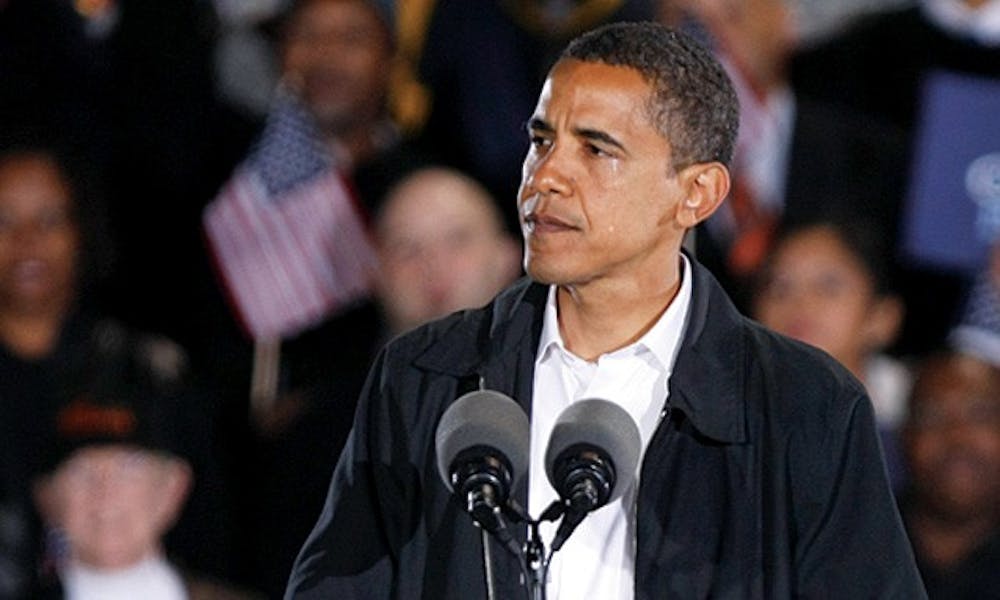For the class of 2010, junior year was a time of historic highs and lows.
In November, America—and notably, traditionally Republican-voting North Carolina—elected Democrat Barack Obama as America’s first black President. Emerging victorious from a contentious and riveting election, Obama soon faced the task of staving off complete financial collapse.
Only a month into junior year, the Class of 2010 saw the Dow Jones Industrial Average tumble nearly 778 points in one day, or 6.98 percent, reflecting the nation’s economic fears. The financial firm Lehman Brothers had gone bankrupt, foreshadowing a deep and protracted global recession. Students and parents alike contemplated the possibility that America was heading toward another Great Depression.
The economic downturn brought attention to a number of the University’s most prominent alumni, including Richard Wagoner, Trinity ’75 and vice chair of the Board of Trustees, who Obama asked to step down as chair and chief executive office of General Motors.
Although it only turned out, by most accounts, to be a “Great Recession,” the downturn’s damaging effects were broad. A housing bubble coupled with risky, unchecked lending resulted in sustained unemployment across the country. Many students worried about their economic prospects after Duke.
On campus, plans for renovations were shelved as the University’s endowment fell by about 20 percent by January 2009—a $1.2 billion decline from a June 2008 high of $6.1 billion. In an effort to eliminate a $125 million budget deficit, the administration announced $50 million in budget cuts. Plans for New Campus were put on hold, shifting administrators’ focus to revitalizing Central Campus. Even with the depressed economy, however, Duke was able to exceed its goal of raising $300 million for financial aid, bringing in more than $308 million by Dec. 31, 2009, and expand its global partnerships, planning for campuses in New Delhi, India and Shanghai, China. The University also celebrated the completion of construction on the Duke-National University of Singapore Graduate Medical School in February 2009.
Although Durham struggled with more acute economic problems, it celebrated the opening of the $44 million Durham Performing Arts Center in December. Trinity Heights residents saw increased dialogue with the University regarding their complaints about off-campus partying.
In March, students chose Awa Nur to be the next president of the Duke Student Government. Capturing 35 percent of the vote in a tight race against three candidates, Nur became DSG’s first female president in a decade and just the second black female president in the organization’s history.
Renowned African American Studies scholar and champion of civil rights John Hope Franklin passed away just a week before the DSG election at the age of 94. The University joined many Americans, including former president Bill Clinton, in celebrating the life and work of the James B. Duke professor emeritus of history.
Duke athletics moved forward with renovations to Cameron Indoor Stadium and Wallace Wade Stadium under Director of Athletics Kevin White during his first year in the position.
Duke sports teams had moments of promise, but in some instances fell short of their lofty standards. New head football coach David Cutcliffe led a squad that finished 4-8 but displayed signs of promise that it might soon compete in a bowl game. On the court, the women’s basketball team lost to head coach Joanne P. McCallie’s former squad, Michigan State, in the second round of the NCAA Tournament. The men’s team took the ACC crown and finished with a 30-7 record, but fell to Villanova in the Sweet Sixteen. The Class of 2010 would have to wait another year for its national championship.
Get The Chronicle straight to your inbox
Signup for our weekly newsletter. Cancel at any time.

